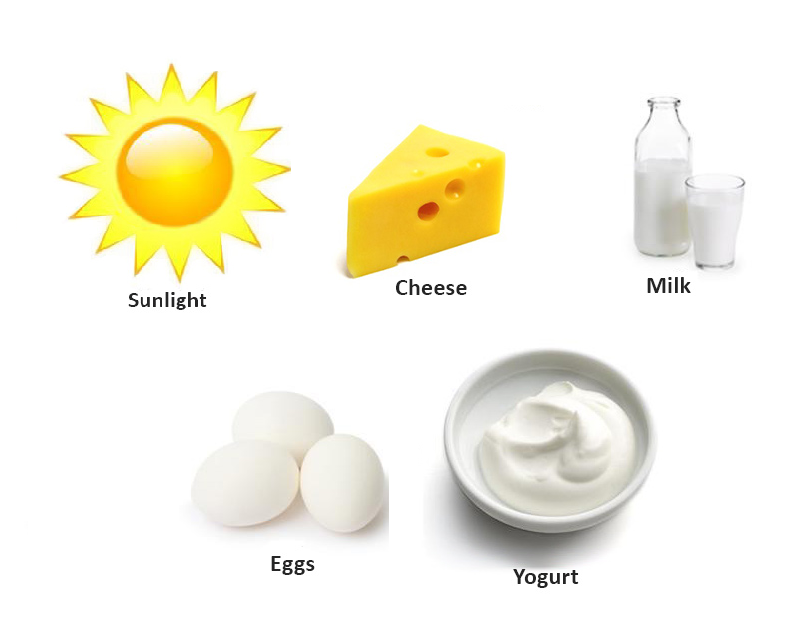
Introduction:
Vitamin D is one of the key and essential nutrients for human health, especially during childhood. This vitamin plays a crucial role in regulating the absorption of calcium and phosphorus in the body, which are vital for the formation and maintenance of strong and healthy bones. Additionally, vitamin D has wide-ranging effects on immune system function, mental health, and the prevention of chronic diseases. During childhood, a deficiency in vitamin D can lead to serious complications, including improper bone growth, muscle weakness, and an increased risk of infections. Despite its importance, many children worldwide face a deficiency in this vitamin, which can be attributed to various factors including limited exposure to sunlight, inadequate diet, and specific medical conditions. In this article, we provide a comprehensive review of the symptoms, causes, and consequences of vitamin D deficiency in children. This review not only helps parents and caregivers better understand this issue but also provides useful information for healthcare professionals to manage and prevent this deficiency. The significance of this topic is particularly evident during the growth and development phase of children, where they have specific nutritional needs, and adequate vitamin D supply can play a vital role in ensuring their long-term health.
Recognizing Symptoms of Vitamin D Deficiency:
What is vitamin D deficiency in children?
Vitamin D deficiency in children is a medical condition where the child’s body is unable to meet its vitamin D requirements. This deficiency can have serious impacts on the child’s health and growth. Vitamin D plays a vital role in the body, and its insufficiency can lead to various problems.
Signs and Symptoms of Vitamin D Deficiency in Children

Signs and Symptoms of Vitamin D Deficiency in Children Vitamin D deficiency in children can manifest with a wide range of symptoms, some of which may be evident in the short term while others may appear over the long term. These symptoms include:
Rickets (Soft Bones): This disease results from defective bone mineralization and can lead to soft and weak bones, bone deformities, and bone and muscle pain.
Delayed Growth and Development: Children with vitamin D deficiency may experience poor growth and delays in developing motor skills such as crawling and walking.
Immune System Problems: Children with vitamin D deficiency may be more susceptible to respiratory infections and other illnesses.
Behavioral and Psychological Issues: Mood changes, irritability, and behavioral problems may be observed in children with vitamin D deficiency.
Dental Problems: Vitamin D deficiency can lead to delayed tooth eruption and weaker teeth. Fatigue and Weakness: Low levels of vitamin D can cause fatigue. Research has shown that vitamin D deficiency can weaken bones and muscles, making individuals more prone to fatigue. These symptoms usually improve with vitamin D supplementation.
General Muscle Pain: Vitamin D regulates muscle function, and its deficiency is associated with muscle pain (myalgia). However, how vitamin D deficiency causes muscle pain is still under investigation. An animal study indicated that vitamin D deficiency might stimulate pain-sensitive nerves
in muscles
.
Frequent Infections: Research suggests that vitamin D deficiency can alter innate and acquired immunity and increase the risk of autoimmunity. Autoimmunity makes individuals more susceptible to autoimmune diseases and frequent infections, especially in the respiratory system.
Poor Wound Healing: Research has shown that vitamin D has crucial anti-inflammatory properties that can accelerate wound healing.
Bone Loss: Vitamin D facilitates calcium absorption, which supplies bones and teeth with minerals. Severe vitamin D deficiency decreases calcium absorption in the body and increases parathyroid hormone levels, leading to calcium loss from bones. Due to the combined effect of reduced calcium absorption and increased bone resorption, children develop nutritional rickets. Rickets is a condition where bones become soft, leading to painful bone deformities that affect life.
Causes and Consequences of Vitamin D Deficiency in Children:
Causes and Consequences of Vitamin D Deficiency in Children:
Vitamin D deficiency in children can arise from various factors, including:
Lack of Sunlight: Children who spend little time outdoors or live in areas with limited sunlight are at higher risk of vitamin D deficiency.
Inadequate Diet: Insufficient intake of vitamin D-rich foods such as fatty fish, egg yolks, and fortified dairy products can lead to a deficiency.
Specific Medical Conditions: Some illnesses and conditions, such as gastrointestinal diseases (like celiac disease) and kidney failure, can disrupt vitamin D absorption or metabolism.
Darker Skin: Children with darker skin require more time in the sun to produce adequate vitamin D because higher melanin levels reduce vitamin D synthesis.
Cultural and Environmental Factors: Wearing covered clothing or frequent use of sunscreen can reduce sunlight exposure and limit vitamin D production.
Consequences of Vitamin D Deficiency:
Vitamin D deficiency can have serious and long-term consequences for children. These include:
Rickets and Bone Problems: Severe vitamin D deficiency can lead to rickets, causing soft and weak bones and bone deformities.
Growth Disorders: Poor growth and delays in developing motor skills may result from vitamin D deficiency.
Increased Risk of Diseases: A weaker immune system can make children more susceptible to infections and autoimmune diseases.
Psychological and Behavioral Issues: Vitamin D deficiency may be associated with an increased risk of depression and behavioral problems in children.
Dental Health: Weakening and delayed eruption of teeth can result from vitamin D deficiency.
Required Amount and Sources of Vitamin D for Children by Age:

Vitamin D Requirements for Children. The amount of vitamin D needed by children varies by age and is typically measured in International Units (IU). Official recommendations by various health organizations may differ slightly, but general guidelines are as follows:
Infants (Under 1 year)
0 to 6 months: The daily requirement for vitamin D is 400 IU.
7 to 12 months: The recommended amount is also 400 IU per day.
Toddlers (1 to 3 years)
For this age group, the recommended daily intake of vitamin D is 600 IU.
Preschool Children (4 to 8 years)
Children in this age range should receive 600 IU of vitamin D daily.
Children and Adolescents (9 to 18 years)
The daily requirement for vitamin D remains 600 IU.
Sources of Vitamin D:
Vitamin D is obtained from three main sources: sunlight, diet, and supplements.
Sunlight: Human skin produces vitamin D when exposed to sunlight. For many children, this is the primary source of vitamin D. However, the amount produced depends on factors such as season, geographic latitude, time of day, skin color, and the amount of body exposed.
Diet: Some foods naturally contain or are fortified with vitamin D:
Egg yolks
Beef liver
Fortified dairy products like milk and yogurt
Fortified cereals
Vitamin D Supplements: When sunlight exposure and dietary intake are insufficient, vitamin D supplements may be necessary. These supplements can be administered as oral drops for infants or as tablets and capsules for older children and adolescents.
Importance of Adequate Vitamin D Supply:
Ensuring adequate vitamin D intake for children is crucial as this vitamin supports several vital processes in the body:
Prevention of Rickets (Soft Bones): Vitamin D is essential for calcium and phosphorus absorption, which are crucial for forming and maintaining strong and healthy bones.
Immune System Strengthening: Vitamin D plays an important role in boosting and regulating the immune system and can help reduce the risk of various infections.
Mental and Cognitive Health: Studies have shown that vitamin D may also impact mental health and cognitive function
Managing and Preventing Vitamin D Deficiency:
To prevent vitamin D deficiency in children, the following measures are recommended:
Encouraging Outdoor Activities: Spending 10 to 30 minutes outdoors in the sun several times a week, depending on skin color and location, can help produce sufficient vitamin D.
Diverse and Rich Diet: Ensure that children follow a varied diet that includes vitamin D-rich foods.
Supplement Use: If necessary and recommended by a doctor, vitamin D supplements can be helpful, especially for children at risk of deficiency or those with specific medical conditions that prevent adequate vitamin D absorption.
Regular Vitamin D Level Checks: For children at high risk of deficiency, regular tests to check vitamin D levels can be beneficial.
Conclusion:
Vitamin D deficiency is a significant health issue that can negatively impact the growth and health of children. Since vitamin D is essential for healthy bone development, proper immune function, and overall health, ensuring adequate intake through diet, supplements, and appropriate sun exposure is crucial. Parents and caregivers should be attentive to signs of vitamin D deficiency in children and consult healthcare professionals if necessary to adopt the best strategies for preventing and treating this deficiency.




